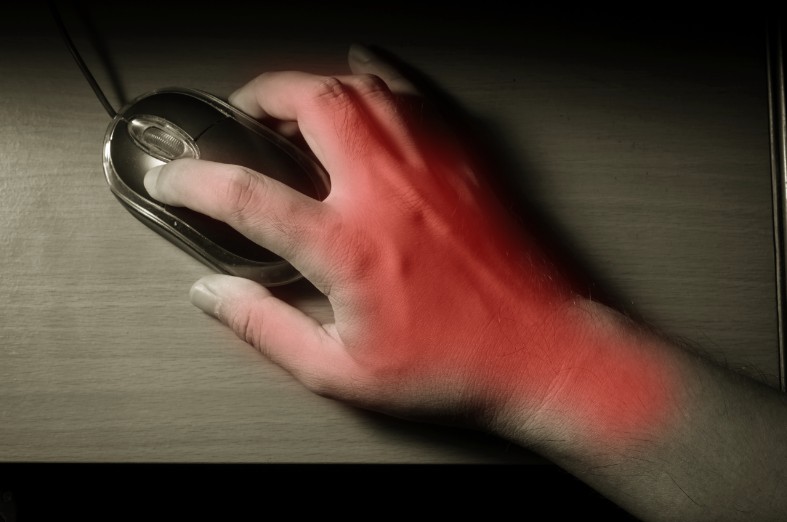Everything About Arthritis and Joint Pain
What causes joint pain and how are arthritis and joint conditions diagnosed? How is treatment approached and which conditions predominantly affect women? Dr. Dana Florentine, a family medicine specialist at Clalit Group and manager of family health, provides a special guide.

Family doctors often hear complaints about joint pain, especially during winter. The causes for these pains are numerous and can be related to diseases of the joint itself or conditions outside of it. A conversation with the family doctor and a physical examination are the first steps toward treating what might prove to be arthritis.
At the rheumatology unit of Beilinson Hospital in the Rabin Medical Center, part of the Clalit Group, a clinic was opened for the early diagnosis and detection of arthritis. The clinic, the only one of its kind in Israel, serves as a 'fast track' for patients arriving at their family doctors with symptoms characteristic of arthritis and joint pain. To expedite and streamline processes, Clalit family doctors have prepared a special form on which they record symptoms and diagnoses and send it to the Beilinson clinic for early diagnosis and detection. Based on these evaluations, patients are invited for treatment at the clinic. A referral from a family doctor is required to be accepted at the clinic.
Dr. Yair Mould, the head of the rheumatology unit at Beilinson, states, 'Today, a significant number of joint diseases can be effectively treated, which is why early diagnosis of the disease is important.' According to him, the Beilinson clinic was established to speed up the diagnosis process of the disease, thereby assisting in providing effective treatment and preventing irreversible damage to patients suffering from arthritis and joint pain.

What causes joint pain in joint diseases?
The pains can result from degenerative processes in the joint or inflammatory processes within it.
Degenerative process: It gradually leads to the erosion of the cartilage within the joint, resulting in the destruction of the joint itself. Sometimes, fluid accumulates in the joint, causing swelling.
Inflammatory process: This occurs when inflammatory cells migrate into the joint. The inflammatory process can be infectious, as in bacteria entering the joint and causing an inflammatory reaction, or it can be reactive to non-infectious diseases.
Non-joint process: Any pain originating near the joint can radiate to it and cause joint pain, such as tendon inflammation.
The conditions and symptoms
Which diseases cause the appearance of joint pain?
1. Osteoarthritis.
Often mistakenly called osteoarthitis (the suffix 'itis' indicates inflammation, hence the error - the disease is not inflammatory). Osteoarthritis is the most common cause of joint pain. The disease affects the cartilage of the joints, yet it is not classic arthritis.
Characteristics: The disease results from the destruction of cartilage over the years, deforming the shape of the joint and causing pain, and eventually, reduced joint function. The pain worsens with weight-bearing movement like walking and climbing stairs. Over time, bumps called osteophytes form on the bones of the joint. After strenuous activity, the joint may ache at night. Sometimes, the joint swells, and if pressure is applied during movement, crepitus is felt. As the disease progresses, joint movement and its axis are affected. Joints commonly affected include the knees, hips, distal finger joints, the base of the thumb, and lumbar and cervical vertebrae. In the fingers, subcutaneous lumps may develop over time.
Treatment: Reducing weight in overweight individuals can lessen the impact on weight-bearing joints (hips and knees). Regular physical activity like walking or swimming for half an hour three times a week is very helpful.
If pain occurs, a pain reliever can be taken half an hour before activity. It's important to keep muscles stretched and maintain the joint's full range of motion. If pain occurs after exercise, warm compresses can be applied to the aching joint. Pain management is a primary treatment focus. Non-NSAID medications are preferable, as NSAIDs are effective when there's an inflammatory component to the disease. Acetaminophen or Algolysin is preferred mainly because of the side effects of Artopan, Voltaren, and Naxin: stomach liner irritation, kidney damage, and increased blood pressure with new-generation drugs like Celecoxib, Arcoxia, Ephopan. If pain becomes unbearable and joint mobility significantly impaired, surgery may be considered. Studies have shown slight improvement with long-term use of dietary supplements containing glucosamine.
2. Rheumatoid arthritis.
Rheumatoid arthritis is an inflammatory condition affecting connective tissue and considered an autoimmune disease, where the body produces antibodies against itself. In this case, the antibodies act against the synovium within the joint. It is a chronic disease spanning years, with flare-ups and remission periods. Multiple joints are affected symmetrically, and women are more prone than men.
Characteristics: Pain and damage in the wrist bases, finger joints near the wrist, elbows, hips, knees, and ankles. A common symptom of the disease is morning stiffness: difficulty moving the joints for half an hour or more after waking. Another symptom for some patients: subcutaneous lumps. After many years, visible joint deformities may appear. Blood tests can show supporting signs such as a high level of a specific antibody called rheumatoid factor and a high sedimentation rate. X-rays of the inflamed joint can show destruction of bones near the joint.
Treatment: Depends on the severity of the disease and includes - in mild cases - anti-inflammatory drugs from the NSAID family. In more severe cases, steroids and additional drugs that suppress the immune system are used.
3. Lupus.
An autoimmune disease affecting connective tissue, primarily affecting young women. One manifestation is arthritis.
Symptoms: In addition to joint pain, the disease also causes various symptoms: the appearance of a butterfly-shaped facial rash, mouth ulcers, blood disorders (anemia, low platelet count, low white blood cell count), skin sensitivity to sunlight and typical rashes, internal inflammations like pleuritis or pericarditis, kidney damage, various psychiatric complaints (presumably due to inflammation in small brain vessels) and joint pain. Here, too, joint pain is symmetrical but does not cause permanent deformities. Blood tests may show elevated levels of specific antibodies.
Treatment: Anti-inflammatory drugs from the NSAID family and additional drugs suppressing the immune system.
4. Scleroderma.
The disease usually begins with joint pain in the hands, affects connective tissue, and is autoimmune. This disease is also more common among women. One manifestation of the disease is arthritis.
Symptoms: Months after joint pain begins, skin thickening appears - the main symptom of the disease. Skin thickening also causes stretching of the face and other body parts. Some patients also experience internal organ damage, such as impairment of esophagus mobility, leading to pain and discomfort while eating. White calcifications can appear under the skin on the fingers.
When exposed to cold, the fingers may turn white and blue, and in severe cases, fingertips may even necrotize, with small blood vessels becoming prominent over the skin.

Treatment: Special antibodies can be found in a blood test, and treatment aims at improving immune system function.
5. Ankylosing Spondylitis.
A disease of connective tissue affecting young men, with a hereditary link. Knees and hips are often affected, as well as hip inflammation. This is also considered a connective tissue disease with an autoimmune mechanism. One manifestation is arthritis.
Treatment: NSAID drugs.
6. Gout.
Caused by uric acid deposits in the joint, often affecting a single joint. One manifestation of the disease is arthritis.
Characteristics: The big toe is often first affected (Podagra). Other joints that may be affected include ankles, knees, and elbows. Most sufferers are men over 60. High uric acid levels in the blood are common (but not always). Sometimes kidney damage due to uric acid deposits occurs.
Treatment: In acute attacks, NSAID drugs are used. For ongoing treatment to prevent further attacks, drugs lowering uric acid levels or colchicine can be taken.
7. Rheumatic fever.
Appears after a strep throat infection not treated with antibiotics, potentially leading to rheumatic fever. One manifestation is arthritis.
Characteristics: Rash, joint pain, neurological symptoms, and heart damage.
The best treatment is preventing the illness - completing antibiotic treatment for bacterial throat infections.
Various other inflammatory conditions can cause joint pain: viral hepatitis of the liver, psoriasis (a skin disease), inflammatory bowel diseases, additional connective tissue diseases, and infectious diseases like endocarditis.
Pain from non-joint conditions:
1. Polymyalgia rheumatica
The disease develops over weeks or months.
Characteristics: Pain and stiffness in the neck and shoulders and/or hips. Pain is particularly severe in the morning and after activating muscles. Generally affects the elderly. Also likely an autoimmune mechanism, the impact is on muscles, not joints. The disease is often accompanied by fatigue, low fever, and weight loss. There's no muscle weakness, only pain. Blood tests show a very high sedimentation rate. It is not an inflammatory disease, hence not arthritis.
Treatment: Moderate to low doses of steroids work wonders.
2. Fibromyalgia.
A syndrome in women describing a collection of symptoms without a clear explanation of the causal process. The causes of the disease's appearance are still unknown. Fibromyalgia is not arthritis but may cause joint pain.
Characteristics: Daytime fatigue due to non-refreshing sleep because of pain, morning muscle stiffness worsening with weather changes and after intense physical activity. The pain is very general, and it's hard to pinpoint a precise location, but sometimes attributed to joint pain despite no joint disease.
Physical examination reveals several characteristic points in the upper back and neck where physical pressure causes pain. All blood tests - including sedimentation rate and levels of various antibodies - are normal.

